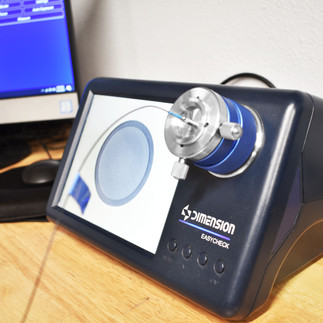Understanding Fiber Pistoning
- PRECISION FIBER PRODUCTS
- Dec 25, 2023
- 3 min read
Updated: Jan 18, 2024
Posted by The Precision Fiber Products’ Team! on 24th Aug 2023
Fiber Pistoning, a significant phenomenon in the realm of fiber optic communication, has been a hot topic of interest for many telecommunication and technology industries across the world. It refers to the sub-micron movements of the optical fibers inside a buffer tube caused by temperature changes, which can detrimentally affect the signal transmission. The United States, being a leading force in technology and telecommunications, provides a dynamic and evolving landscape for fiber pistoning.
What is Fiber Pistoning?
Fiber pistoning occurs when fibers move or "piston" within the buffer tube due to temperature variations. This movement may lead to optical loss, which can result in signal degradation, affecting network performance and reliability. As the fiber optic network infrastructure in the U.S. continues to grow, understanding and mitigating fiber pistoning becomes essential.

Impact on Telecommunication Infrastructure in the United States
In the United States, the rapid proliferation of broadband communication and high-speed data services demands reliable, fast, and secure connections. Consequently, fiber optic cables have become the backbone of the nation's telecommunications infrastructure. Fiber pistoning poses challenges to this growing network, primarily due to its impact on signal reliability. As the U.S. spans multiple climate zones, optical fibers frequently experience fluctuating temperatures, increasing the risk of fiber pistoning. This risk is magnified in large-scale networks spanning across multiple states, where temperature variances are even more significant.
Regulatory Considerations and Standards
Regulation and standardization bodies like the Federal Communications Commission (FCC) and the Telecommunications Industry Association (TIA) have acknowledged the issue of fiber pistoning. They have provided guidelines for manufacturing and installation practices, ensuring minimal impact on network performance and longevity. Standards such as ANSI/TIA-568, which governs the performance and testing of optical fibers, explicitly mention environmental factors like temperature, emphasizing the need to consider and mitigate fiber pistoning in fiber optic networks.

Fiber Pistoning and Precision Fiber Products, Inc.
With more than three decades of industry experience, Precision Fiber Products, Inc. has consistently achieved and often surpassed customer expectations with regards to product quality. We have dedicated substantial resources towards research and development, with a passionate emphasis on Innovative solutions. A particular area of focus has been the minimization of fiber pistoning, a development that has yielded significant enhancements in the longevity of fiber optic networks, the security of data transmission, and overall customer satisfaction within the telecommunications sector. Our most recent pistoning test results, shows the importance that PFP places on product quality by having a group of experts work extended periods of time on testing and proving our process performance under varying temperature conditions. The initial measurements were taken, following which the cords were subjected to freezing conditions at -10.0 degrees Celsius for a duration of two hours. Subsequently, they were allowed to equilibrate to room temperature for 45 minutes, post which measurements were taken again. The cords then underwent the same procedure, but this time, they were exposed to an oven-set temperature for one and a half hours, brought back to room temperature, and measured once more. The comprehensive results of these trials, covering 36 patch cords with two tips each, can be found in the latest Test Results.
Conclusion
The U.S. telecommunications market has shown adaptability and resilience in tackling the challenges posed by fiber pistoning. Through continuous innovation, stringent regulations, and proactive monitoring, the industry has managed to turn potential disruption into an opportunity for technological advancement. The mitigation of fiber pistoning is critical to maintaining the robustness of the U.S.' ever-growing fiber optic infrastructure. This is a priority in ensuring network reliability and performance, and for everyone at PFP, we view prioritizing fiber pistoning as part of our ongoing commitment to technological excellence.








